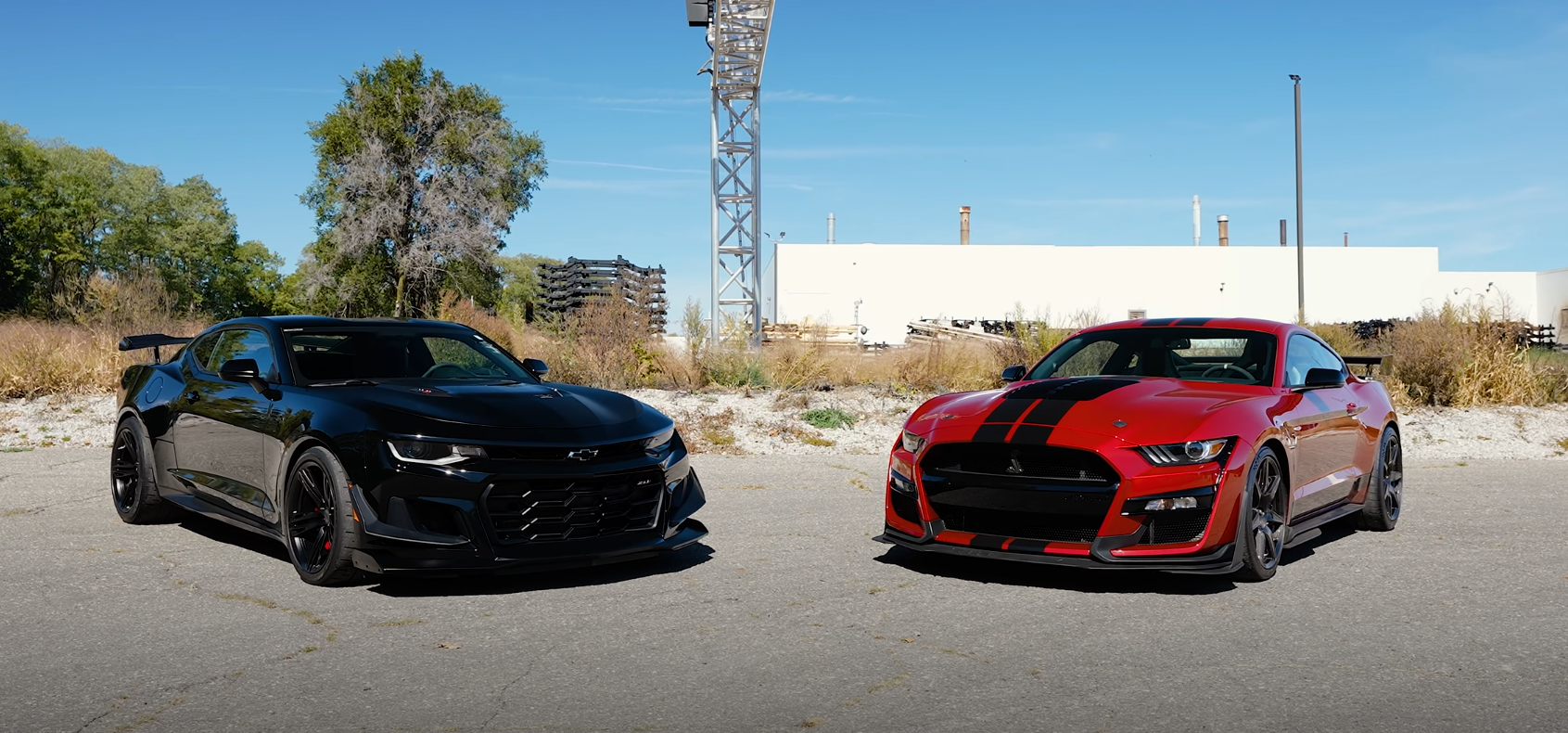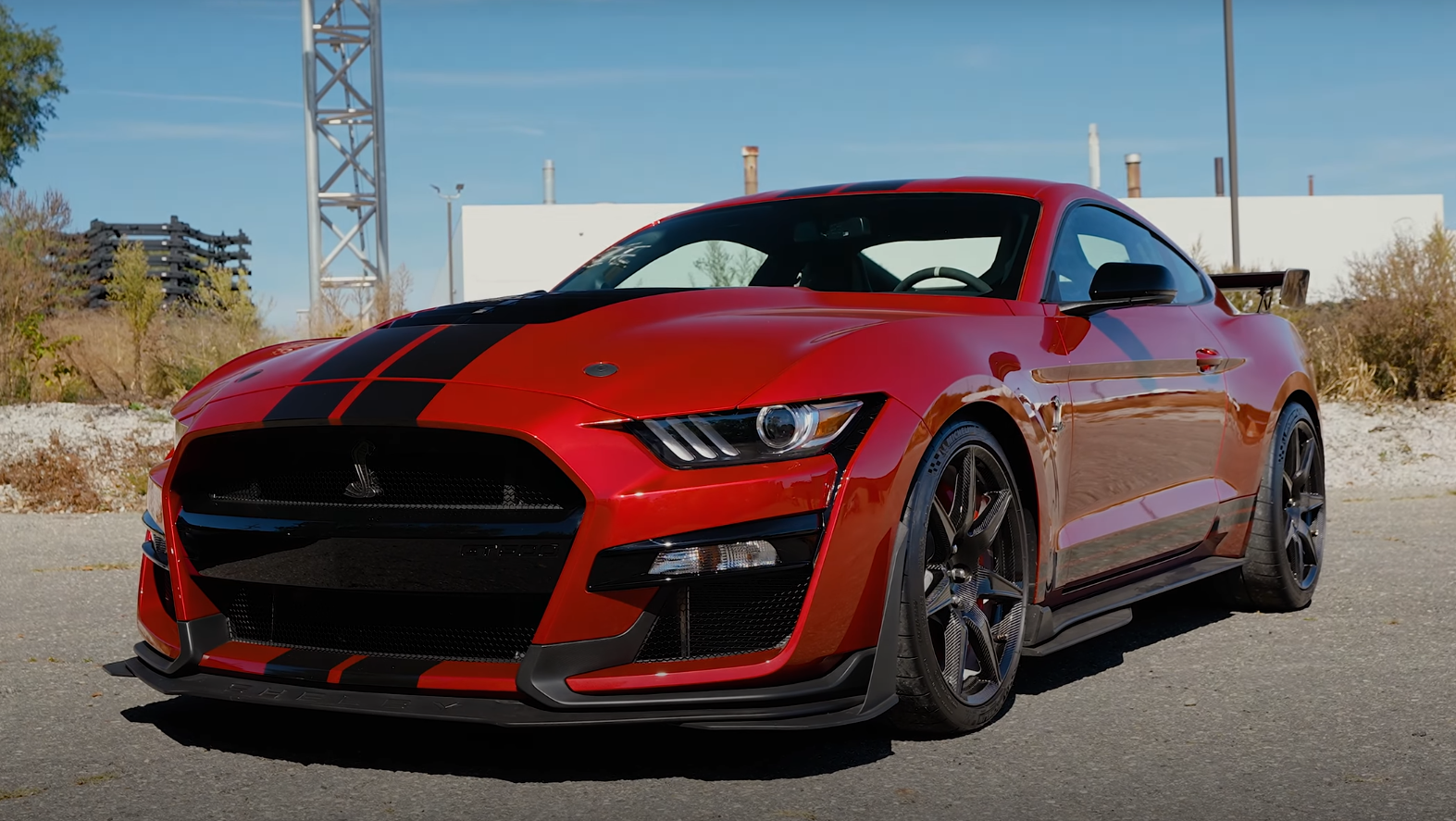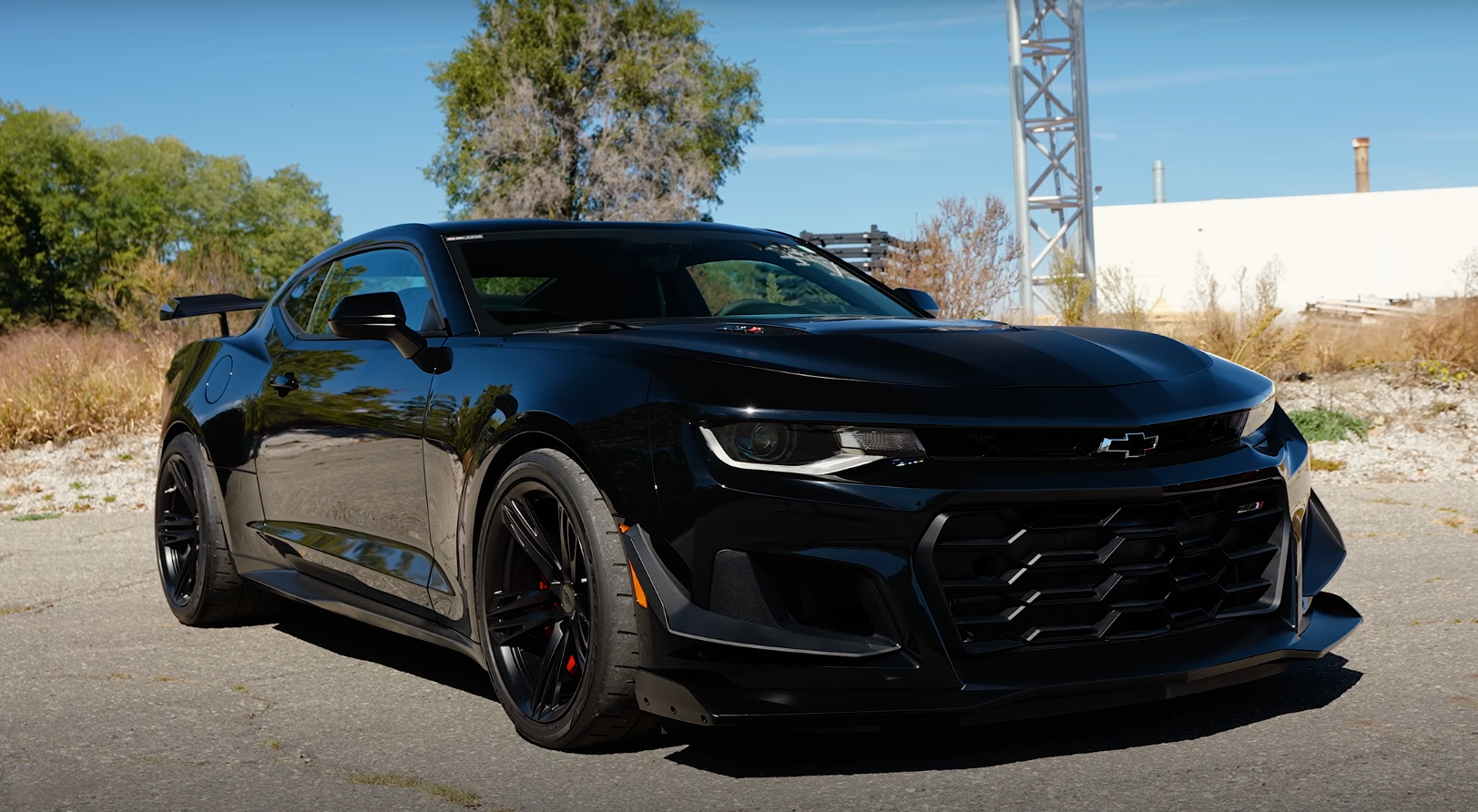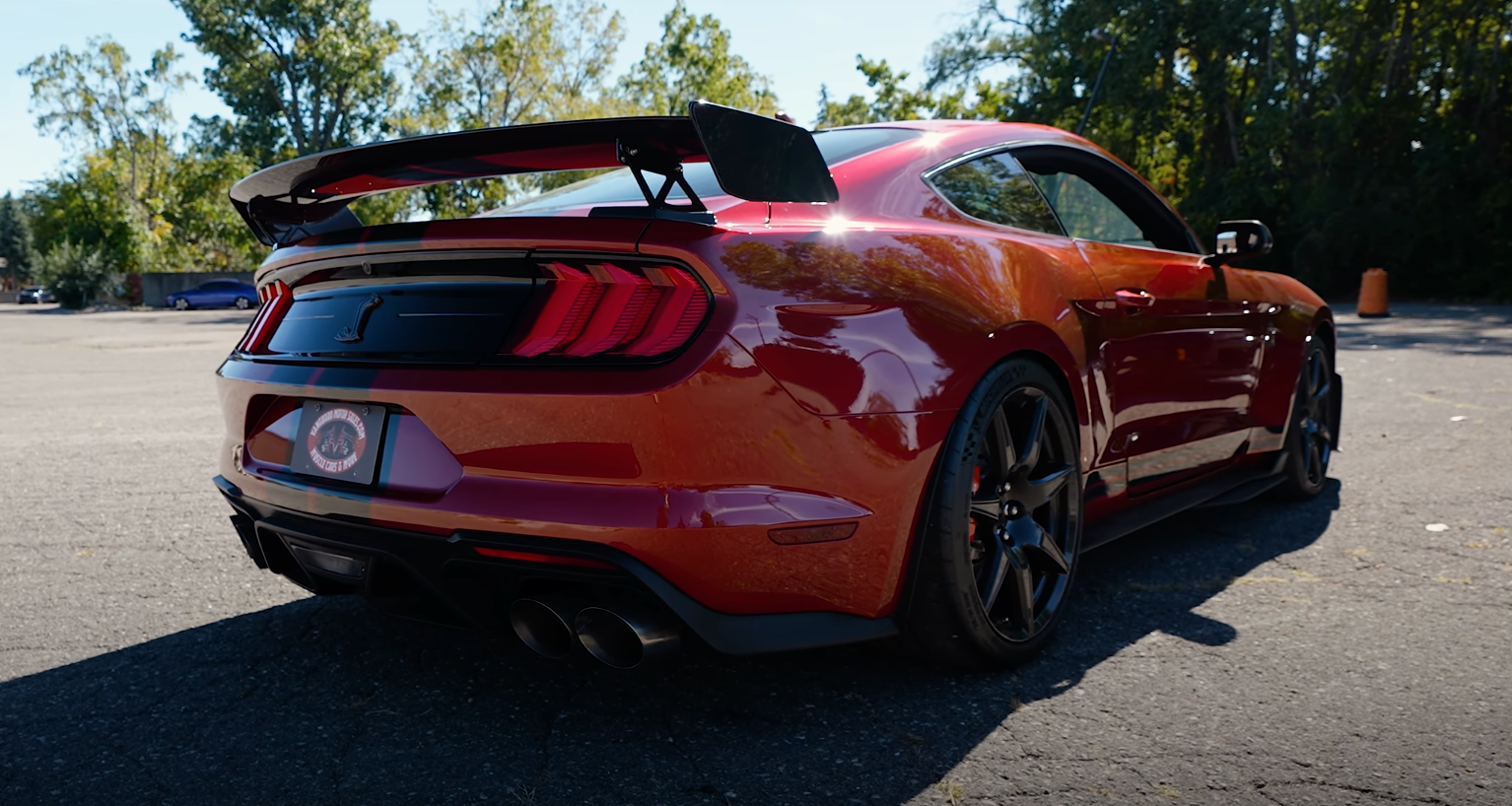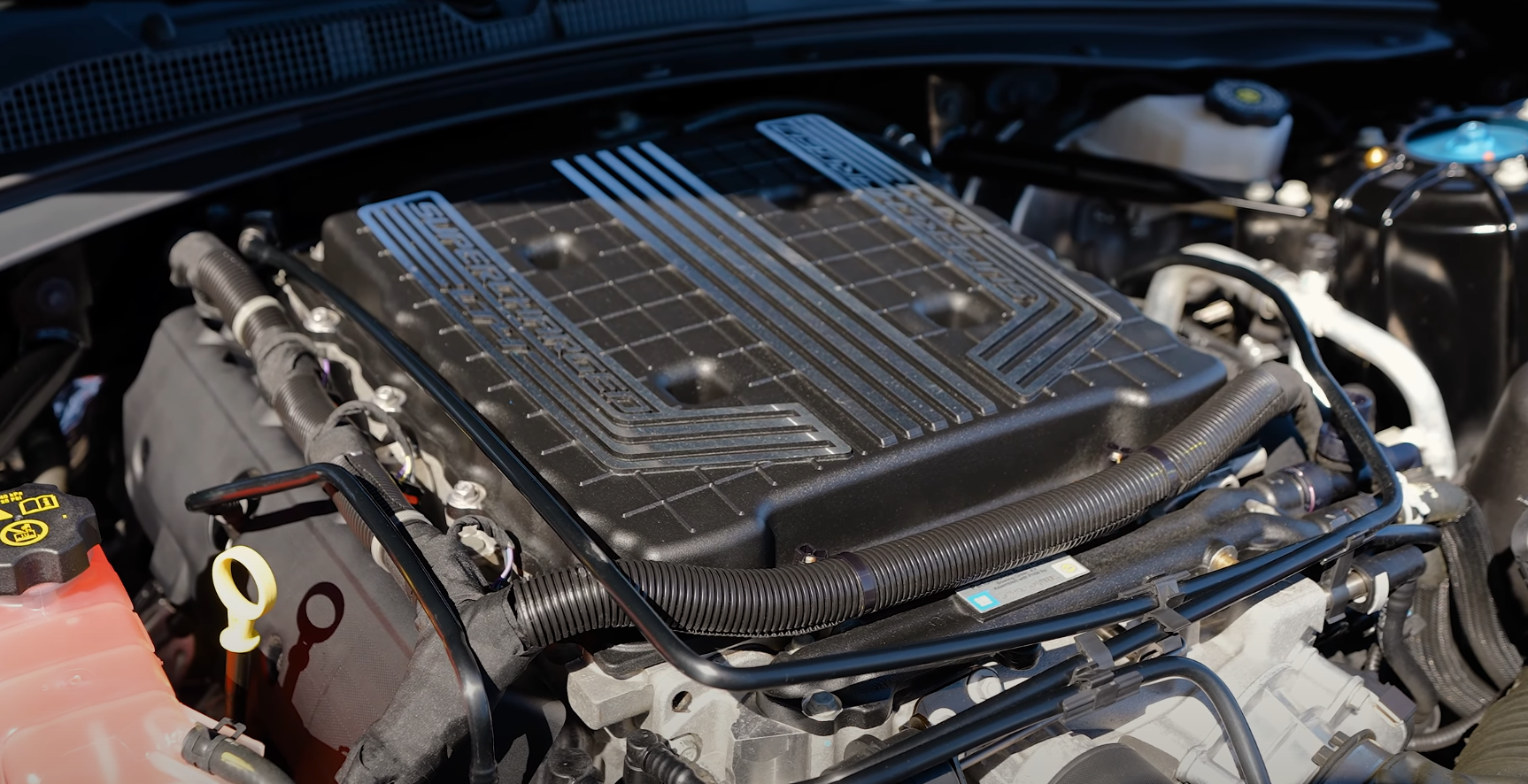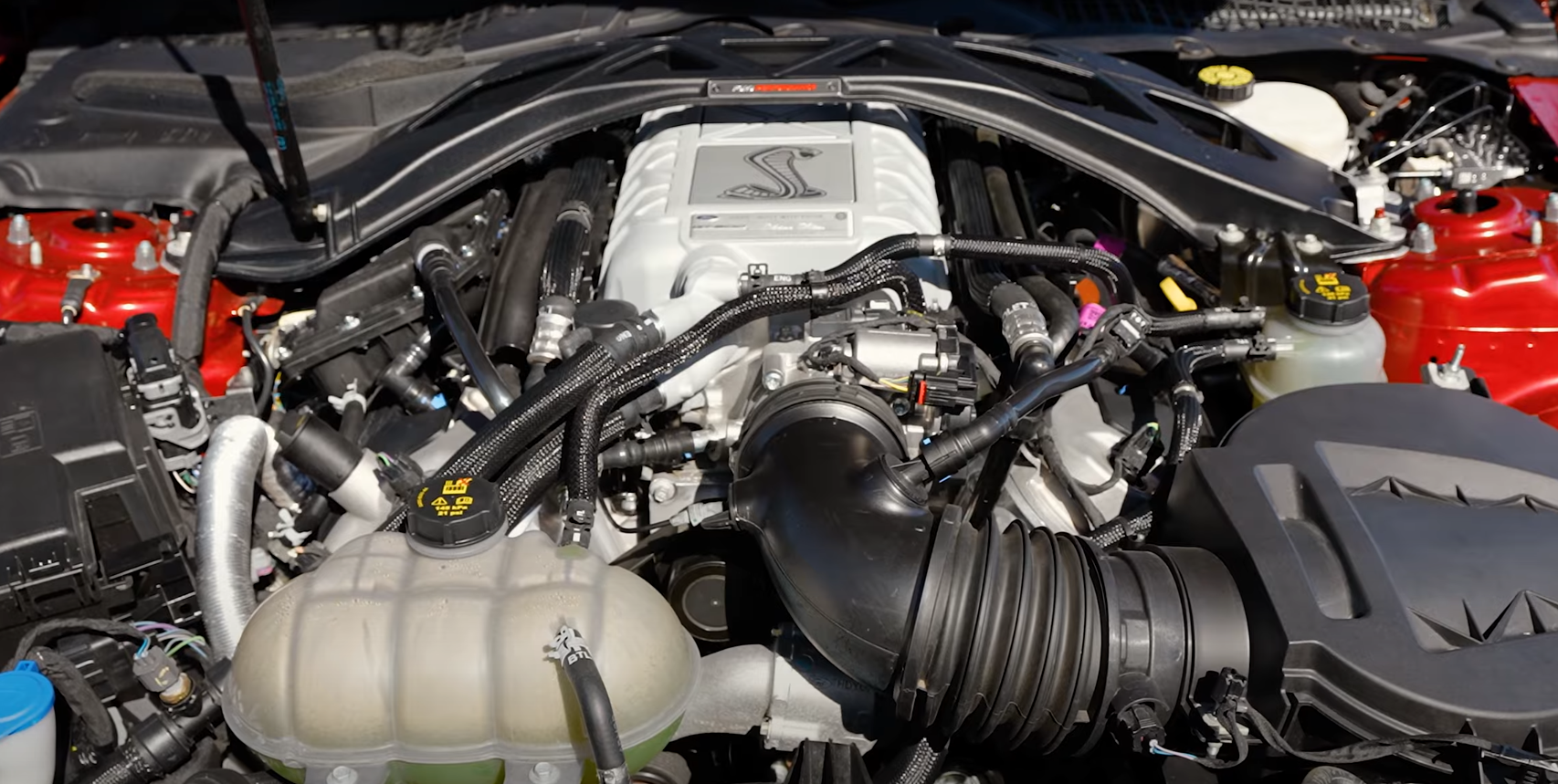Two icons of American performance stand side by side, each built to deliver speed and precision. The Ford Mustang GT500 and Chevrolet Camaro ZL1 1LE both push engineering limits with powerful engines, advanced aerodynamics, and track-focused designs. Each model shows how far modern muscle cars have evolved while keeping their classic spirit alive.
From the carbon fiber details to the custom driving modes, both cars balance raw power with control. Their interiors reflect different priorities—one focused on racing efficiency, the other on comfort and usability. Both offer thrilling driving experiences that highlight the best of American performance engineering.
Key Takeaways
- Both cars feature high-performance designs built for track and street use
- Each model offers a unique balance of comfort, power, and control
- The comparison highlights modern improvements in American muscle cars
Overview of the Ford Mustang GT500
Powertrain and Driving Performance
The GT500 uses a 5.2‑liter Predator V8 engine with a large supercharger that produces 760 horsepower. Each engine is hand‑built and signed by its builder. A seven‑speed dual‑clutch transmission shifts in milliseconds, allowing smooth and fast gear changes. Drivers can select from several modes—Track, Drag, Slippery, and Sport—to adjust handling and performance.
Exterior Design and Components
The car features a carbon fiber track package with lightweight panels and a bold design. It includes Recaro seats, a Cobra emblem, and a digital display that changes layouts depending on the selected drive mode. The rear seats are removed in this package to save about 150 pounds for improved track performance.
Brake Setup
Large Brembo brakes measure about 16.5 inches in the front. They provide strong stopping power and resist heat buildup during high‑speed driving. The calipers and rotors work with advanced cooling and anti‑lock systems to maintain consistent braking on the track.
Wheel and Tire Details
The GT500 rides on carbon fiber wheels with special heat‑resistant coating developed from aerospace technology. The front tires measure 305/30ZR20, and the rear tires are 315/30ZR20. The car uses Michelin performance tires for maximum grip and stability.
| Position | Tire Size | Material | Brand |
|---|---|---|---|
| Front | 305/30ZR20 | Carbon Fiber | Michelin |
| Rear | 315/30ZR20 | Carbon Fiber | Michelin |
Aerodynamic Elements
A large carbon fiber rear wing provides adjustable downforce for different driving conditions. The design allows the driver to fine‑tune the angle for track or street use. Combined with the front splitter and body lines, the aerodynamic setup keeps the car stable at high speeds.
Overview of the Chevrolet Camaro ZL1 1LE
Powertrain and Driving Performance
The Camaro ZL1 1LE runs a 6.2‑liter LT4 supercharged V8 that produces 650 horsepower. It uses a six‑speed manual transmission, giving drivers full control over gear changes. The engine delivers strong acceleration and a deep exhaust tone that highlights its performance focus.
Exterior Design and Details
The car features a matte black hood and carbon‑fiber components that reduce weight and add a race‑ready look. The carbon‑fiber rear wing stands out visually and contributes to track stability. The overall design gives the Camaro a more aggressive and purposeful appearance.
Stopping Power
Up front, the ZL1 1LE uses 15.3‑inch Brembo brakes, providing strong and consistent stopping performance. The large rotors and multi‑piston calipers help manage heat during hard braking, especially on track days.
Tires and Wheel Setup
| Position | Tire Size | Brand |
|---|---|---|
| Front | 305/30R19 | Goodyear Eagle F1 |
| Rear | 325/30R19 | Goodyear Eagle F1 |
The Goodyear Eagle F1 tires give the car high grip and stability. The staggered setup, with wider tires in the rear, helps transfer power effectively and improves cornering traction.
Downforce and Stability
The aerodynamic package includes the large rear wing, front splitter, and other carbon‑fiber elements that improve airflow and downforce. These parts help the Camaro stay balanced at high speeds and enhance handling through corners.
Interior Features and Comfort
Seats and Upholstery
Both cars use Recaro performance seats that hold the driver firmly during hard turns. The Mustang’s seats feel more track-focused and do not include heating or cooling. The Camaro’s seats offer heating and ventilation, giving them a softer and more comfortable feel for longer drives. The Mustang’s track package removes the rear seats to save about 150 pounds, while the Camaro keeps a usable back seat for passengers.
Instrument Panel and Controls
Inside the Mustang, the digital gauge cluster changes layout based on drive mode, showing different tach and speed displays for Track, Drag, or Normal modes. The Camaro’s dashboard includes rotary vents that double as temperature controls, a unique and simple design touch. Both cars feature touchscreen displays and steering wheel controls for quick access to performance and comfort settings.
Gearbox Choices
The Mustang GT500 uses a seven-speed dual-clutch transmission that shifts in milliseconds. It uses two clutches that alternate gears for fast, smooth changes. The Camaro ZL1 1LE comes with a six-speed manual transmission that gives the driver full control and a more hands-on driving feel.
| Model | Transmission Type | Shifting Style |
|---|---|---|
| Mustang GT500 | 7-speed dual-clutch | Automatic, paddle-shift capable |
| Camaro ZL1 1LE | 6-speed manual | Traditional stick shift |
Technology and Ease of Use
The Mustang includes multiple drive modes such as Track, Drag, and Snow/Ice, along with adjustable exhaust sound levels. The Camaro provides climate control through vent rings, plus heated and cooled seat options. Both cabins include starter buttons, infotainment screens, and modern connectivity features, blending everyday comfort with track-ready design.
Driving Experience and Handling
Performance on the Track
Both cars deliver serious performance on the circuit. The Mustang GT500 uses a 5.2‑liter supercharged engine that produces 760 horsepower, paired with a seven‑speed dual‑clutch transmission for lightning‑fast shifts. Its carbon‑fiber wheels, Brembo brakes, and adjustable rear wing help it stay stable under pressure.
The Camaro ZL1 1LE runs a 6.2‑liter supercharged engine with 650 horsepower and a six‑speed manual transmission. Its Goodyear Eagle F1 tires and 15.3‑inch Brembo brakes give it strong grip and stopping power. On tight corners, it feels balanced and precise, making it a strong rival to the Mustang.
| Model | Horsepower | Transmission | Front Brake Size | Tire Brand |
|---|---|---|---|---|
| Mustang GT500 | 760 hp | 7‑speed dual‑clutch | 16.5 in | Michelin |
| Camaro ZL1 1LE | 650 hp | 6‑speed manual | 15.3 in | Goodyear |
Everyday Comfort and Use
Inside, both cars feature Recaro seats, but the Camaro’s are softer and more comfortable for longer drives. It also includes a rear seat, heated and cooled front seats, and unique vent controls for cabin temperature. The Mustang’s track‑focused interior drops the back seat to save weight and uses a digital display that changes with each drive mode.
Visibility differs between the two. The Camaro’s smaller side windows limit outward view, while the Mustang offers a lower beltline and a more open feel. Both cars include modern screens, steering‑wheel controls, and selectable drive modes for road or track conditions.
Engine Note and Exhaust Tone
Each car produces a distinct sound. The Camaro’s LT4 engine has a sharper, higher‑pitched roar, while the Mustang’s Predator motor gives off a deeper, heavier tone. The Mustang allows drivers to adjust exhaust volume through selectable modes such as Sport and Track.
When started, both engines respond instantly, filling the space with mechanical noise that reflects their power. The Camaro’s manual gearbox adds a raw, connected feel, while the Mustang’s quick shifts and exhaust tuning create a strong sense of control and feedback.
Performance Comparison
Power Output and Engine Strength
The Mustang GT500 runs a 5.2-liter supercharged V8 that produces 760 horsepower. Its engine, known as the Predator, is hand-built and signed by its builder. The Camaro ZL1 1LE uses a 6.2-liter supercharged LT4 V8 with 650 horsepower. Despite the smaller engine, the Mustang delivers more power per cubic inch.
| Model | Engine | Horsepower | Transmission |
|---|---|---|---|
| Mustang GT500 | 5.2L Supercharged V8 | 760 hp | 7-speed dual-clutch |
| Camaro ZL1 1LE | 6.2L Supercharged V8 | 650 hp | 6-speed manual |
Launch and Top-End Performance
The GT500’s dual-clutch transmission shifts in milliseconds, allowing near-instant gear changes. It accelerates faster in a straight line, giving it the edge in the quarter mile. The Camaro’s manual gearbox offers a more hands-on driving feel but cannot match the GT500’s shift speed. Both cars reach high speeds quickly, though the Mustang’s extra power provides stronger top-end pull.
Handling and Stopping Power
Both cars feature Brembo braking systems and carbon fiber components. The Mustang uses 16.5-inch front rotors with carbon fiber wheels, while the Camaro has 15.3-inch front rotors. Tire setups differ: the Mustang rides on Michelin tires and the Camaro on Goodyear Eagle F1s.
In tight turns, the Camaro’s ZL1 1LE package gives it sharper cornering response, while the Mustang’s adjustable rear wing improves stability. The Camaro includes a rear seat and slightly less visibility due to its higher door line, but both cars remain balanced and track-ready.
Personal Reflections and Closing Thoughts
He described both cars with confidence, noting how each one delivered its own kind of excitement. The Mustang GT500 impressed him with its Predator engine, sharp design, and powerful sound. He admired the carbon fiber parts, large Brembo brakes, and the adjustable rear wing that gave the car a track-ready look.
The Camaro ZL1 1LE earned his respect for its comfort and handling. He pointed out the six-speed manual transmission, the unique air vent controls, and the mix of heated and cooled seats. He also noticed the smaller side windows that limited visibility compared to the Mustang.
| Feature | Mustang GT500 | Camaro ZL1 1LE |
|---|---|---|
| Engine | 5.2L Supercharged V8 | 6.2L Supercharged V8 |
| Horsepower | 760 hp | 650 hp |
| Transmission | 7-Speed Dual Clutch | 6-Speed Manual |
| Rear Seat | None (Track Pack) | Available |
| Tires | Michelin | Goodyear |
He enjoyed both cars for their strength and design. The Mustang felt faster in a straight line, while the Camaro seemed more balanced in corners. Though he found it hard to pick a clear winner, he leaned toward the Mustang for its power and sound.


